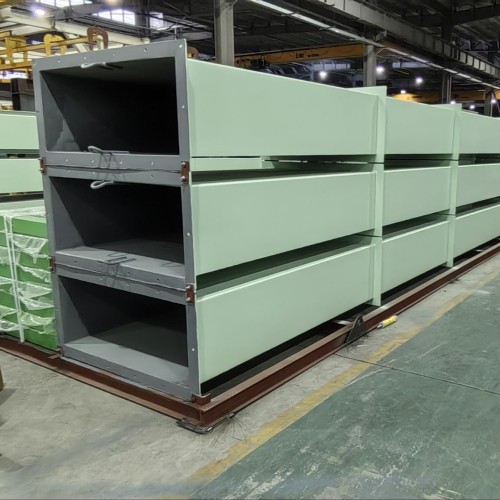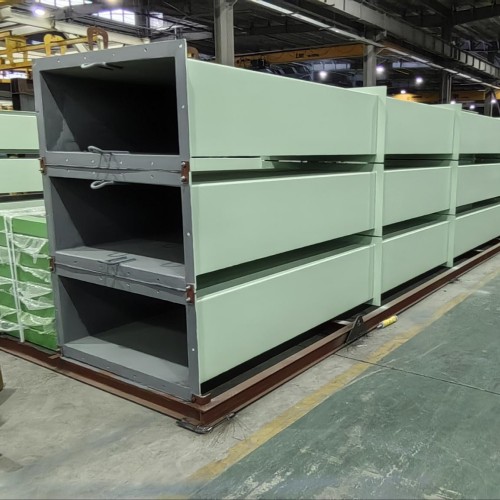
Mechanical Conveying
Mechanical Conveying: An Overview
Mechanical conveying involves the movement of bulk materials using mechanical equipment, such as conveyors, elevators, and feeders. It is a reliable and efficient method for transporting materials such as powders, granules, pellets, aggregates, and other solid bulk products across various industries.
Types of Mechanical Conveyors
- Belt Conveyors:
- Ideal for transporting bulk materials over long distances.
- Used in industries like mining, power plants, cement, and food processing.
- Screw Conveyors:
- Use a rotating helical screw blade within a trough or tube.
- Commonly used for granular or powdery materials like ash, flour, and chemicals.
- Chain Conveyors (En-Masse Conveyors):
- Use a continuous chain with attached flights or paddles to move material within an enclosed trough.
- Effective for abrasive, granular, and powdery materials in industries like cement, biomass, and energy.
- Bucket Elevators:
- Vertical conveyors that use buckets attached to a belt or chain to lift materials to a higher elevation.
- Used for materials like grains, cement, and ash.
- Drag Conveyors:
- Move materials by dragging them along an enclosed trough with a chain or cable system.
- Suitable for high-volume and abrasive material handling.
- Vibratory Conveyors:
- Use vibration to move materials along a trough or pan.
- Ideal for fragile or irregularly shaped materials like food products.
- Pneumatic vs. Mechanical Conveyors:
- While pneumatic systems use air to transport materials, mechanical conveyors rely on physical components like belts, chains, or screws, making them more energy-efficient for heavy materials.
Advantages of Mechanical Conveying
- Energy Efficiency:
- Consumes less power compared to pneumatic systems, especially for heavy materials.
- High Capacity:
- Capable of handling large volumes of materials continuously.
- Durability:
- Designed to handle abrasive and heavy-duty materials over extended periods.
- Customizable Configurations:
- Can be designed for horizontal, inclined, or vertical conveying, adapting to specific plant layouts.
- Cost-Effective:
- Lower operational and maintenance costs compared to other systems.
- Minimal Environmental Impact:
- Enclosed designs reduce dust, spillage, and contamination.
Applications of Mechanical Conveyors
- Energy Industry:
- Handling coal, ash, biomass, and other fuel materials.
- Cement and Construction:
- Transporting cement, clinker, limestone, sand, and aggregates.
- Food and Beverage:
- Conveying grains, sugar, flour, and packaged products.
- Mining:
- Moving ore, coal, and waste rock in mining operations.
- Agriculture:
- Transporting grains, seeds, and fertilizers.
- Waste Management:
- Handling solid waste, slag, and ash in incineration or recycling plants.
Key Considerations for Mechanical Conveying Systems
- Material Properties:
- Flowability, abrasiveness, moisture content, and particle size impact the choice of conveyor.
- Capacity and Speed:
- Ensure the system meets throughput requirements without overloading.
- Space Constraints:
- Choose systems like vertical conveyors (bucket elevators) for limited floor space.
- Environmental Factors:
- Enclosed systems are ideal for handling dusty or hazardous materials.
- Maintenance Requirements:
- Opt for systems with durable components and minimal downtime.
- Energy Consumption:
- Evaluate energy efficiency, especially for continuous operations.
Popular Mechanical Conveying Solutions
- Ash Handling Systems:
- Submerged Scraper Conveyors for wet ash handling.
- Screw Conveyors for dry ash transport.
- Clinker Transport in Cement Plants:
- En-Masse Chain Conveyors for high-temperature materials.
- Biomass Conveying:
- Drag Chain Conveyors for handling wood chips, pellets, and ash.
- Food Industry Conveyors:
- Vibratory or Belt Conveyors for hygienic and gentle material handling.
Advantages of Mechanical Conveying Over Pneumatic Systems
- Lower Energy Costs:
- Mechanical systems are more efficient for transporting dense and heavy materials.
- Gentler Material Handling:
- Less material degradation compared to high-velocity pneumatic systems.
- Higher Reliability:
- Mechanical systems are more robust, with fewer moving parts prone to failure.
Conclusion
Mechanical conveying systems offer a versatile, reliable, and cost-effective solution for bulk material handling across a wide range of industries. Whether handling powders, granules, or heavy, abrasive materials, these systems provide efficient transport with low operational costs.
Would you like help designing a mechanical conveying system or choosing the right solution for your specific application?



Write your message here and send it to us




